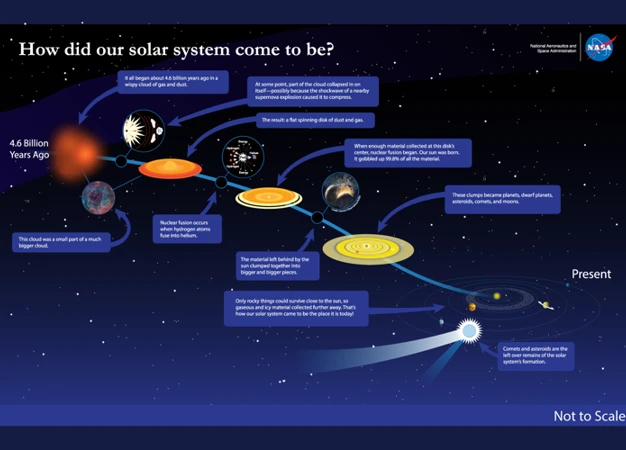The vastness and complexity of the solar system have fascinated scientists for centuries. One intriguing phenomenon within this celestial realm is the role of asteroids in the formation of the solar system. These enigmatic objects, characterized by their rocky and metallic composition, have played a crucial role in shaping our cosmic neighborhood. From their origins in the primordial solar nebula to their impact cratering and delivery of water and organic materials, asteroids hold the key to understanding the early stages of planet formation and the development of life on Earth. In this article, we will delve into the fascinating world of asteroids and explore their significance in unraveling the mysteries of the solar system.
Contents
- 1. What are Asteroids?
- 2. Origins of Asteroids
- 3. Role in Planet Formation
- 4. Impact Cratering and Remodeling
- 5. Delivery of Water and Organic Materials
- 6. Asteroids as Time Capsules
- Conclusion
-
Frequently Asked Questions
- 1. What is the difference between asteroids and comets?
- 2. Are asteroids dangerous to Earth?
- 3. Can asteroids contain valuable resources?
- 4. How do scientists study asteroids?
- 5. Can asteroids be mined for minerals?
- 6. Have any spacecraft visited asteroids?
- 7. Can asteroids collide with each other?
- 8. Can we divert an asteroid on a collision course with Earth?
- 9. Are all asteroids in the asteroid belt?
- 10. Can asteroids provide clues about the formation of other planetary systems?
- References
-
Frequently Asked Questions
- 1. What role do asteroids play in the formation of the solar system?
- 2. How are asteroids defined and what are their characteristics?
- 3. What are the different types of asteroids?
- 4. How did asteroids originate?
- 5. What is the role of asteroids in planet formation?
- 6. How do asteroids contribute to impact cratering?
- 7. Can asteroids deliver water and organic materials to planets?
- 8. How do asteroids serve as time capsules?
- 9. How do asteroids contribute to our understanding of meteorite composition?
- 10. What can studying asteroids tell us about the early solar system?
- References
- Read More
1. What are Asteroids?
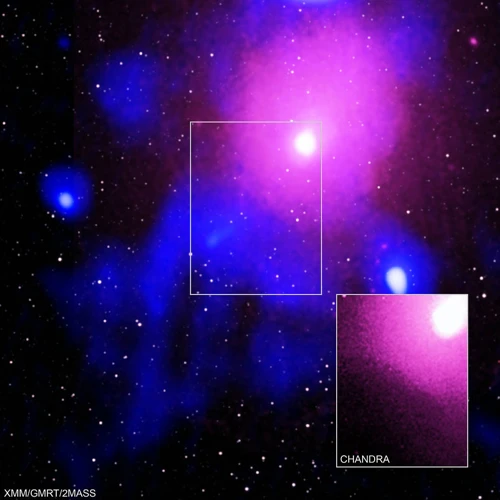
An asteroid is a small rocky object that orbits the Sun and is predominantly composed of various minerals and metals. These celestial bodies are remnants from the early days of our solar system, dating back to around 4.6 billion years ago. Asteroids vary in size, ranging from tiny boulders to larger bodies measuring hundreds of kilometers in diameter. They are often irregularly shaped, bearing a resemblance to potatoes and other asymmetrical forms. While most asteroids can be found in the asteroid belt, a region located between the orbits of Mars and Jupiter, they can also be found elsewhere, such as in orbits within the inner and outer regions of the solar system. Some asteroids have even been observed to have moons of their own, adding to the intrigue and complexity of these objects. Due to their composition and proximity to Earth, studying asteroids provides valuable insights into the early history of our solar system and the formation of planets and other celestial bodies. [1]
Asteroids can be classified into several different types based on their composition, reflecting the diversity of materials present in the early solar system. The most common types of asteroids include C-type, S-type, and M-type asteroids. C-type asteroids are carbonaceous and are found mostly in the outer region of the asteroid belt. They are rich in organic compounds, such as water and hydrocarbons, making them potential sources of life’s building blocks. S-type asteroids, on the other hand, are silicate-rich and reside in the inner region of the asteroid belt. These asteroids are composed of minerals like olivine and pyroxene, similar to the rocky inner planets like Earth and Mars. Finally, M-type asteroids are metallic in composition, consisting of materials such as iron and nickel. These metallic asteroids are believed to be the remnants of the cores of ancient planetesimals that failed to form fully fledged planets. [2]
1.1 Definition and Characteristics
Asteroids are rocky objects that orbit the Sun and are smaller than planets. They are remnants from the early stages of our solar system’s formation and are composed of various minerals and metals. Here are some key characteristics of asteroids:
1. Shape: Asteroids come in various shapes and sizes, ranging from irregularly shaped bodies to more rounded ones. Their shape is determined by their composition and the forces they have experienced over time.
2. Composition: Asteroids are primarily made up of rocky materials, such as silicates, metals, and organic compounds. The specific composition varies depending on the type of asteroid. For example, carbonaceous (C-type) asteroids are rich in carbon-based compounds, while metallic (M-type) asteroids are composed mainly of metals like iron and nickel.
3. Size: Asteroids come in a wide range of sizes, from small boulders to large bodies that can span hundreds of kilometers in diameter. The largest known asteroid, Ceres, has a diameter of about 940 kilometers.
4. Orbits: Most asteroids can be found in the asteroid belt, a region located between the orbits of Mars and Jupiter. However, asteroids can also be found in other regions of the solar system, including the inner and outer regions.
5. Moons: Some asteroids have their own moons, which orbit around them. These moonlets can provide additional information about the asteroid’s history and formation processes.
6. Classification: Asteroids are classified into different types based on their composition, with the most common types being C-type, S-type, and M-type asteroids. This classification helps scientists understand the diversity of materials present in the early solar system. [1]
Understanding the definition and characteristics of asteroids is crucial for studying their role in the formation of the solar system and their potential implications for our understanding of other celestial bodies.
1.2 Types of Asteroids
The classification of asteroids is based on their composition and characteristics, offering valuable insights into the diverse nature of these celestial objects. One of the prominent types of asteroids is the C-type. These asteroids are carbonaceous and are primarily found in the outer region of the asteroid belt. They are composed of a mixture of clay, silicate minerals, ice, and organic compounds. C-type asteroids are particularly interesting to scientists because they potentially hold clues about the origins of life on Earth, as they contain volatile elements and organic matter. Another type of asteroid is the S-type. These asteroids are silicate-rich and predominate in the inner region of the asteroid belt. They have a rocky composition, similar to that of the Earth and Mars. S-type asteroids are composed of minerals such as olivine and pyroxene and provide insights into the building blocks of terrestrial planets. Lastly, we have the M-type asteroids. These asteroids are metallic in nature, consisting primarily of iron and nickel. They are thought to be fragments of the cores of ancient planetesimals, failed planet building blocks. The classification of asteroids into these different types enhances our understanding of the formation and evolution of the solar system and provides valuable clues about the materials that existed during its early stages.
2. Origins of Asteroids
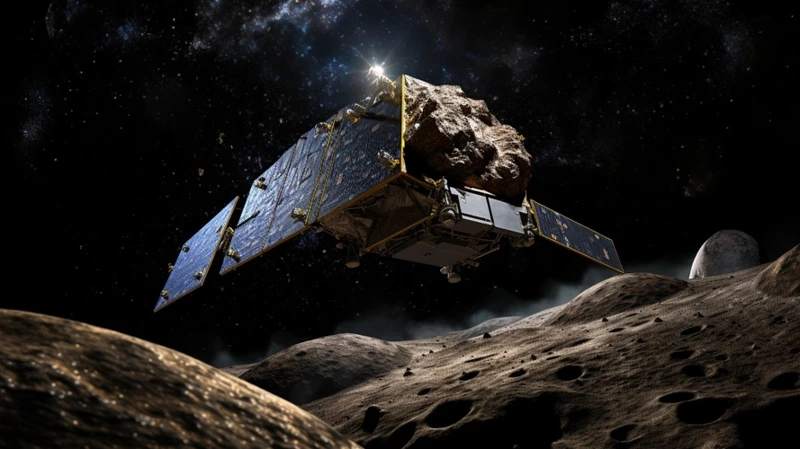
Asteroids trace their origins back to the primordial solar nebula, a vast swirling cloud of gas and dust that existed during the early stages of our solar system’s formation. Approximately 4.6 billion years ago, gravitational forces and the collapse of the nebula led to the formation of a protoplanetary disk. This disk was composed of gas and dust particles, which gradually clumped together due to mutual gravitational attraction. Over time, these particles grew in size and transformed into planetesimals, the building blocks of both asteroids and planets.
As planetesimals continued to collide and accrete, they grew larger, eventually becoming protoplanets. This process, known as accretion, occurred within the protoplanetary disk as material continued to be attracted to these growing bodies. The protoplanetary disk provided a rich environment where small particles could collide and merge, leading to the formation of larger rocky objects. However, not all protoplanets were able to accumulate enough mass to become full-fledged planets. Some remained as smaller bodies, which we now know as asteroids.
Numerous factors influenced the formation and evolution of asteroids within the protoplanetary disk. These factors include the distance from the Sun, the composition of materials present, and gravitational interactions with larger celestial bodies. For example, in the asteroid belt located between Mars and Jupiter, the gravitational effects of Jupiter’s massive presence prevented the accumulation of sufficient material to form a planet. As a result, this region became populated with numerous asteroids of varying sizes and compositions.
The origins of asteroids can be attributed to the processes of accretion and the evolution of the protoplanetary disk. These remnants offer valuable insights into the early stages of our solar system’s formation and serve as a window into the conditions that shaped the development of celestial bodies, including planets and moons.
2.1 The Primordial Solar Nebula
The primordial solar nebula played a crucial role in the formation of asteroids and the entire solar system. It was a vast cloud of gas and dust that existed during the early stages of the solar system, composed primarily of hydrogen and helium, along with trace amounts of other elements. This nebula was formed from the remnants of previous stellar events, such as supernovae explosions. The force of gravity caused the nebula to collapse inward, leading to the formation of a spinning disk called the protoplanetary disk. Within this disk, matter began to clump together due to the attractive force of gravity, giving rise to planetesimals – small, solid objects that would eventually become asteroids and planets. Inside the protoplanetary disk, dust particles collided and stuck together, gradually growing in size through a process called accretion. Over time, these planetesimals continued to collide and merge, forming larger bodies known as protoplanets. Some of these protoplanets would become the building blocks for terrestrial planets like Earth, while others would serve as the foundation for gas giant planets like Jupiter. The formation of asteroids within the protoplanetary disk was a critical step in shaping the solar system as we know it today.
2.2 Accretion and Protoplanetary Disk
Accretion and the presence of a protoplanetary disk are essential components in understanding the origins of asteroids and the formation of the solar system. Accretion refers to the process by which small particles collide and stick together, gradually growing in size until they form larger bodies like asteroids. This process occurs within a protoplanetary disk, a rotating disk of gas and dust that surrounds a young star. As the star forms, its gravitational pull causes the nearby gas and dust to clump together, forming these disks. Over time, the particles within the disk start to collide and stick together due to their mutual gravitational attraction, forming planetesimals. Planetesimals are solid bodies ranging in size from a kilometer to several kilometers. Within the disk, these planetesimals continue to collide and merge, gradually growing in size through a process called planetesimal accretion. Eventually, the larger and more massive planetesimals give rise to the formation of protoplanets, which are the building blocks for planets. Throughout this process, the gravitational influence of these growing bodies causes the disk to evolve and disperse, leaving behind remnant asteroids, some of which reside in the asteroid belt. In this way, the accretion process within a protoplanetary disk lays the foundation for the creation of asteroids and the formation of the solar system as we know it.
3. Role in Planet Formation
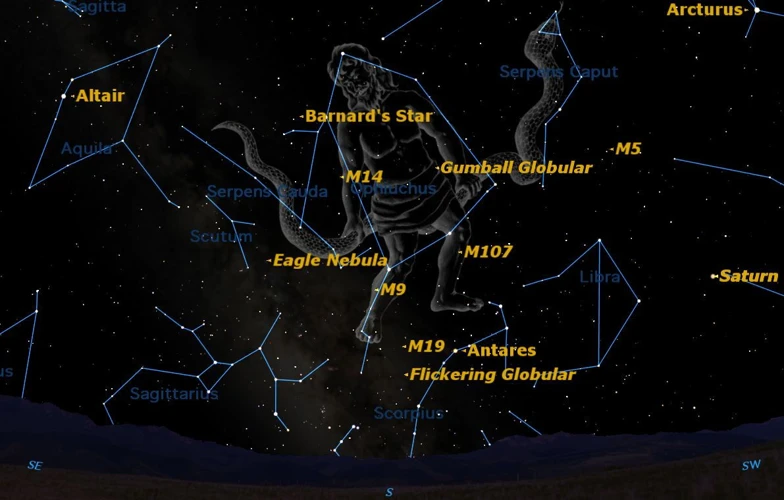
Asteroids play a crucial role in the formation of planets within the solar system. Let’s explore their contributions and significance in this process.
3.1 Clearing the Orbital Path: One of the key roles of asteroids is clearing the orbital path for planets to form. As planets begin to take shape, their gravitational pull interacts with nearby asteroids, either causing them to collide with the growing planet or be flung out of the system altogether. This gravitational interaction helps to clear out the debris and create a relatively stable orbital path for the young planet. The presence of asteroids in the early stages of planet formation also influences the distribution of materials and the overall architecture of the planetary system.
3.2 Building Terrestrial and Gas Giant Planets: Asteroids also contribute to the formation of both terrestrial and gas giant planets. In the case of terrestrial planets like Earth, asteroids bring vital building blocks such as water, metals, and organic compounds. These materials are essential for the development of planetary atmospheres, oceans, and the potential origins of life. Additionally, collisions with asteroids can provide the necessary energy to initiate volcanic activity and drive geological processes that contribute to the formation and shaping of the planet’s surface.
When it comes to gas giant planets like Jupiter and Saturn, asteroids are believed to have played a significant role in their formation. In the early stages of planetary development, a solid core must form. These cores are thought to have primarily grown by the accumulation and accretion of numerous asteroids, with their immense gravitational pull allowing them to sweep up nearby objects. Over time, the core can reach a critical mass, triggering the rapid accumulation of gas from the protoplanetary disk and the eventual formation of a massive gas giant.
Asteroids shape the process of planet formation by clearing the orbital path, providing essential building blocks, and contributing to the growth of both terrestrial and gas giant planets. Their impact on the dynamics and composition of the early solar system is fundamental to understanding the incredible diversity of planets that exist in our cosmic neighborhood.
3.1 Clearing the Orbital Path
Clearing the orbital path is a crucial role that asteroids play in the formation of the solar system. As planets form from the protoplanetary disk, gravitational interactions with asteroids help to shape and define the orbits of these celestial bodies. Asteroids act as gravitational “shepherds,” clearing debris and maintaining the integrity of their orbital regions. This process, known as orbital clearing, is particularly evident in the asteroid belt located between Mars and Jupiter. Jupiter’s immense gravitational pull prevents asteroids from accreting to form a planet, causing their orbits to become unstable. As a result, any asteroid that enters a resonant orbital position with Jupiter will experience gravitational interactions that can either eject it from the solar system altogether or send it on a collision course with a planet. This clearing mechanism not only helps to maintain the stability of the asteroid belt but also prevents potential collisions with planets, contributing to the overall structure and organization of the solar system.
3.2 Building Terrestrial and Gas Giant Planets
Asteroids played a crucial role in the formation of both terrestrial and gas giant planets in the solar system. During the early stages of planetary formation, the protoplanetary disk surrounding young stars consisted of gas, dust, and various small objects, including asteroids. These asteroids acted as building blocks, colliding and merging to form larger bodies known as planetesimals. Some of these planetesimals eventually grew massive enough to become terrestrial planets like Earth and Mars, while others accumulated more material to form gas giants like Jupiter and Saturn.
In the inner region of the protoplanetary disk, where the temperatures were higher, primarily rocky materials were present. As planetesimals collided in this region, they gradually accumulated enough mass and material to form the solid cores of terrestrial planets. These cores were primarily composed of metals and silicate materials, similar to the composition of asteroids in the inner asteroid belt. The cores of terrestrial planets grew over time as they gravitationally attracted more material, including gases from the disk, to eventually become fully formed rocky planets.
In the outer regions of the protoplanetary disk, where temperatures were lower, materials such as ice and gas were prevalent. Here, the accumulation of planetesimals and asteroids led to the formation of gas giant planets. The cores of gas giants also began as rocky planetesimals, but they were able to accumulate enough mass to gravitationally capture significant amounts of gas from the protoplanetary disk, forming their massive atmospheres. The cores of gas giants grew rapidly due to their ability to capture and retain large amounts of gas, ultimately becoming the colossal planets we see today.
Asteroids played a vital role in the formation of both terrestrial and gas giant planets by serving as the building blocks for the early stages of planet formation. Their collisions and mergers contributed to the growth of planetesimals, which eventually led to the formation of solid cores that became the foundations for the diverse range of planets we observe in the solar system today. [1]
4. Impact Cratering and Remodeling
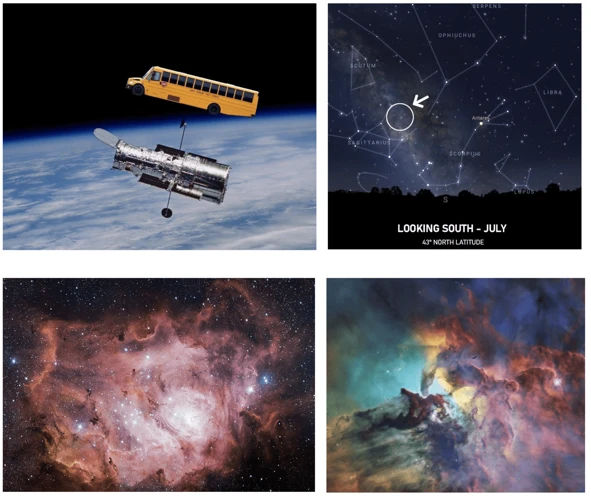
Impact cratering and remodeling are significant processes influenced by asteroids in the dynamic evolution of planetary bodies. When an asteroid collides with a planet or moon, it creates a crater or results in the rearrangement of the surface features. These impact events can have catastrophic consequences, causing massive destruction and altering the geological landscape of the affected celestial body. The size of the crater depends on various factors, including the velocity, size, and angle of impact, as well as the target body’s composition. Impact craters are characterized by a central uplift and a raised rim surrounding the depression. The energy released during the impact causes shock waves that fracture and melt the rock, resulting in the ejection of debris and forming a crater rim made of uplifted rocks and a central peak consisting of uplifted and sometimes melted material. In some cases, impact events can even trigger volcanic activity by creating fractures that allow magma to reach the surface. Over time, erosion and other geological processes can modify or erode the impact features, but their unique characteristics provide valuable insights into the history of celestial bodies and the impact events that have shaped them. [1]
4.1 Extinction Events and the Aftermath
Extinction events have had a significant impact on the history of life on Earth, and asteroids have played a crucial role in these catastrophic events. When a large asteroid collides with Earth, it can cause widespread destruction and dramatically change the environment. One of the most notable extinction events linked to an asteroid impact is the Cretaceous-Paleogene (K-Pg) extinction event, which occurred approximately 66 million years ago. This event is widely believed to have led to the extinction of the dinosaurs and the rise of mammals. The aftermath of such an impact event is characterized by a global crisis, including massive fires, tsunamis, and a release of dust and aerosols into the atmosphere that can block sunlight and disrupt the climate. [3] These catastrophic events have shaped the course of evolution on Earth, allowing new species to emerge and adapt to the changing conditions. The study of impact craters and the impact processes involved can provide valuable insights into the mechanisms of these extinction events and their long-lasting effects on the planet and its inhabitants. Additionally, the examination of asteroid composition and the identification of specific elements and minerals can help trace the source of the impacting asteroid and provide clues about its origin and history. [4] Understanding these extinction events and their aftermath is crucial for comprehending the dynamic nature of our planet and the role that asteroids have played in shaping Earth’s history.
4.2 Remodeling Planetary Bodies
Asteroids have played a significant role in remodeling planetary bodies throughout the history of the solar system. When an asteroid collides with a planet or moon, it has the potential to cause significant changes to the landscape. The impact energy released during such collisions can create massive craters, reshape the surface, and even trigger volcanic activity. These impactful events have been instrumental in shaping the geology and morphology of celestial bodies. One of the most famous examples of asteroid-induced remodeling is the Chicxulub impact, which occurred approximately 66 million years ago. This event, linked to the extinction of the dinosaurs, resulted in the formation of the Chicxulub crater in the Yucatán Peninsula, Mexico. The impactor responsible for this event was likely a large asteroid or a comet, and the force of the impact led to widespread devastation and long-lasting effects on Earth’s ecosystem. Similarly, numerous impact craters can be found on the Moon and other planets, acting as visible scars of past asteroid collisions. These impacts not only modify the surface but can also eject debris into space, some of which may find their way to other celestial bodies. As a result, the constant interplay between asteroids and planetary bodies continues to shape the dynamics of the solar system, creating an ever-evolving cosmic tapestry. [1]
5. Delivery of Water and Organic Materials
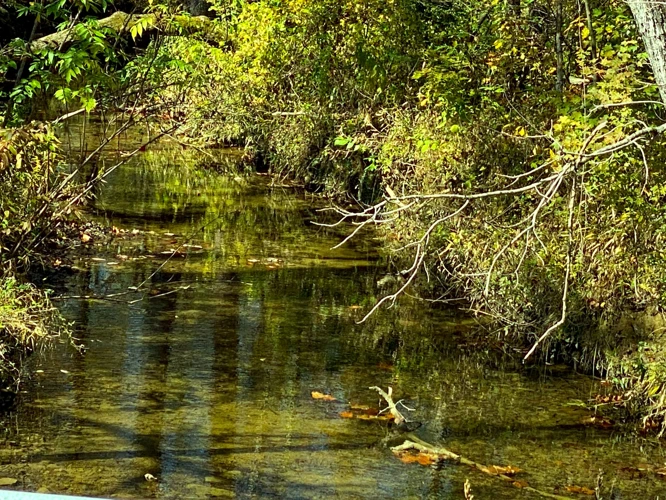
Asteroids have a significant role in the delivery of water and organic materials to celestial bodies within the solar system. One type of asteroids known as volatile-rich asteroids play a crucial role in this process. These asteroids contain a high abundance of volatile compounds, including water ice, carbon dioxide, methane, and ammonia. They originate from the outer regions of the solar system, where temperatures are low enough for these volatile compounds to condense and form ice. As these volatile-rich asteroids travel closer to the Sun, the heat causes the ice to sublimate, releasing the trapped volatiles into space.
The delivery of water and other volatile compounds by volatile-rich asteroids is essential for the formation and sustenance of life. Water is a fundamental ingredient for life as we know it, and the presence of organic materials provides the building blocks necessary for the formation of complex molecules. When asteroids containing water and organics collide with planets or moons, they can deposit these essential substances onto the surface.
One prominent example of this delivery is the bombardment of Earth by comets and asteroids during its early history. These impacts brought vast amounts of water to our planet, contributing to the formation of oceans and the development of conditions suitable for the emergence of life. Additionally, organic materials delivered by asteroids could have provided the necessary chemical precursors for the origin of life on Earth.
Scientific missions, such as the Japanese spacecraft Hayabusa2, have directly observed and studied volatile-rich asteroids, providing valuable data on their composition and potential for delivering water and organics. By understanding the role of asteroids in delivering these crucial materials, scientists gain insights into the mechanisms and processes that may have contributed to the emergence of life not only on Earth but also on other celestial bodies within the solar system.
Asteroids, especially volatile-rich asteroids, act as carriers of water and organic materials, playing a critical role in the development of habitable environments within the solar system. Their impact events provide the means for delivering these essential substances to planets and moons, potentially paving the way for the emergence of life. The study of these celestial objects enhances our understanding of the origins of life on Earth and the potential for life elsewhere in the universe.
5.1 Volatile-Rich Asteroids
Volatile-rich asteroids are a fascinating subset of asteroids that contain a significant amount of volatile substances, such as water, carbon dioxide, and methane. These volatile substances are of immense interest to scientists, as they provide valuable clues about the origins of water and organic compounds on Earth. Studies have shown that these asteroids likely formed in the outer regions of the solar system, where the temperatures were colder and volatile materials could condense and become trapped within the rocky and metallic matrix of the asteroids. The presence of water and organic compounds on these asteroids suggests that they may have played a crucial role in delivering these essential ingredients for life to our planet.
To further understand the composition and characteristics of volatile-rich asteroids, scientists have conducted detailed analyses of meteorites that have fallen to Earth from these celestial objects. These meteorites, known as carbonaceous chondrites, contain a wealth of information about the volatile-rich asteroids and the early solar system. Carbonaceous chondrites are composed of a matrix of fine-grained minerals called chondrules, which are thought to have formed in the protoplanetary disk that surrounded the young Sun. These chondrules contain small inclusions of water, amino acids, and organic molecules, indicating that volatile-rich asteroids may have served as repositories for the building blocks of life. [1]
In addition to their significance in understanding the origin of life on Earth, volatile-rich asteroids also hold potential for future space exploration and resource utilization. Water, in particular, is a precious resource in space, as it can be broken down into its constituent elements, hydrogen and oxygen, which can then be used for rocket propellant and life support systems. Studying and eventually mining these volatile-rich asteroids could be the key to enabling long-duration space missions and establishing a sustainable presence beyond Earth.
To summarize, volatile-rich asteroids provide a glimpse into the past, revealing the presence of water and organic compounds in the early solar system. Their composition and potential resource value make them not only scientifically intriguing but also hold promise for future space exploration endeavors. [2]
5.2 Seedlings of Life
Asteroids, particularly volatile-rich asteroids, play a significant role as potential seedlings of life in the solar system. These asteroids contain a wealth of water and organic compounds, which are essential building blocks for the emergence of life. Through impacts and collisions, these volatile-rich asteroids can deliver their precious cargo to other planetary bodies, including Earth. These water-bearing asteroids, also known as carbonaceous chondrites, may have contributed to the Earth’s water content and the development of our planet’s early life forms. The delivery of water and organic materials from asteroids is thought to have played a vital role in the development and sustenance of habitable conditions on our planet.
The study of meteorites, which are fragments of asteroids that have fallen to Earth, has provided valuable insights into the organic chemistry required for life. Scientists have discovered amino acids, the building blocks of proteins, in some meteorites, suggesting that these organic compounds could have originated from asteroids. In fact, the famous Murchison meteorite, which fell in Australia in 1969, contained a wide range of organic molecules, including amino acids, nucleobases, and sugars. These findings not only support the theory of a potential extraterrestrial origin of life’s ingredients but also highlight the role of asteroids as time capsules preserving the chemical history of the early solar system.
The delivery of water and organic materials by asteroids to other planetary bodies extends beyond Earth. Moons like Europa, one of Jupiter’s satellites, are believed to have subsurface oceans that may harbor life. Scientists speculate that impacts from water-rich asteroids could have delivered the necessary ingredients for the development of life on these moons as well. Additionally, studying asteroids and their organic content provides invaluable insights into the potential habitability of other celestial bodies within and beyond our solar system. By investigating the organic molecules present in asteroids, scientists can better understand the possibility of life existing on other planets or moons. The involvement of asteroids as seedlings of life holds great significance in our search for extraterrestrial life and our understanding of the conditions required for life to arise and thrive.
6. Asteroids as Time Capsules
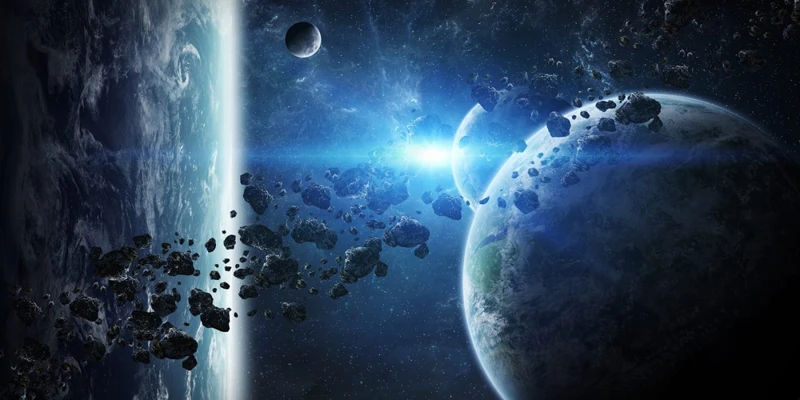
Asteroids serve as valuable time capsules, preserving crucial information about the early solar system and its formation. By studying asteroids, scientists can gain insights into the composition, processes, and conditions that prevailed billions of years ago. One way asteroids provide information about the early solar system is through the study of their composition. Certain types of asteroids, such as carbonaceous or C-type asteroids, contain volatile elements and organic compounds, including water, amino acids, and even complex hydrocarbons. These materials are essential building blocks for life as we know it, and their presence in asteroids suggests that the ingredients for life may have been present during the formation of the solar system. Another significant aspect of studying asteroids is gaining a deeper understanding of meteorite composition. Meteorites are remnants of asteroids that have fallen to Earth, providing scientists with tangible samples to analyze. These meteorites preserve the geological and chemical characteristics of the parent asteroids, allowing researchers to determine their age and composition. Through detailed analysis of meteorites, scientists have been able to unravel the chemical and isotopic history of the solar system, including the formation of our Sun and the processes that led to the creation of different planetary bodies.
To further our understanding of the early solar system, scientists have embarked on space missions to asteroids. These missions involve spacecraft reaching and sometimes even landing on asteroids to conduct direct observations and collect samples for analysis. One prominent example is the Hayabusa2 mission by the Japan Aerospace Exploration Agency (JAXA), which successfully returned samples from the asteroid Ryugu in 2020. These samples provide an unprecedented opportunity to study the composition and history of an asteroid in detail and address fundamental questions about the formation and evolution of the solar system. In addition to spacecraft missions, ground-based telescopes and space telescopes also play a crucial role in studying asteroids and their properties. These observations help identify and characterize asteroids, their orbits, and their compositions, contributing to our overall understanding of the solar system and its formation.
Asteroids offer a unique glimpse into the past, acting as time capsules that hold crucial information about the early stages of our solar system. Through the study of asteroids, scientists can deepen their understanding of the formation of planets, the origins of life, and the evolution of our cosmic neighborhood. This ongoing research continues to expand our knowledge of the solar system’s rich history and inspires further exploration and discovery.
6.1 Studying the Early Solar System
Studying the early solar system is a significant aspect of asteroid research, as these celestial bodies provide valuable insights into the conditions and processes that were present during the formation of our cosmic neighborhood. By examining the composition and properties of asteroids, scientists can gain a deeper understanding of the materials that were present in the protoplanetary disk, the rotating disk of gas and dust from which the planets formed. Asteroids act as time capsules, preserving ancient materials that have remained relatively untouched since the birth of the solar system. Through analysis of meteorites, which are fragments of asteroids that have fallen to Earth, scientists can study the isotopic compositions and trace elemental abundances that existed billions of years ago. This data helps in reconstructing the chemical and physical conditions during the early stages of planet formation. The study of asteroids contributes to our knowledge of the dynamics of the solar system, including how planets migrated and interacted with one another over time. This understanding is crucial for developing comprehensive models of the formation and evolution of not just our solar system but also other planetary systems throughout the universe.
6.2 Understanding Meteorite Composition
Understanding the composition of meteorites is crucial in gaining insights into the early solar system, and asteroids play a pivotal role in this understanding. Meteorites are rocks that have fallen to Earth from space, and they provide a glimpse into the composition and makeup of asteroids. By analyzing the chemical and mineralogical composition of meteorites, scientists can infer the conditions and processes that occurred during the formation of the solar system. Meteorites can be broadly classified into three main types: stony, iron, and stony-iron meteorites.
Stony meteorites, also known as chondrites, are the most common type of meteorites found on Earth. They consist mainly of rocky materials and are rich in minerals like olivine, pyroxene, and feldspar. These meteorites are believed to represent the building blocks of planets and asteroids, providing valuable information about the early stages of planet formation.
Iron meteorites are composed primarily of iron and nickel, with traces of other elements. These meteorites originate from the cores of differentiated asteroids. The presence of Widmanstätten patterns, which are unique crystalline structures, confirms their extraterrestrial origin. Studying iron meteorites helps scientists understand the processes of planetary differentiation and the formation of metallic cores in rocky bodies.
Stony-iron meteorites, as the name suggests, are a combination of both rocky and metallic components. They are thought to originate from the boundary regions between a differentiated asteroid’s core and mantle. These meteorites are extremely rare and provide valuable insights into the complex geological history of the early solar system.
In addition to their classification, analyzing the isotopic compositions of meteorites can reveal information about the age of the solar system and the processes that occurred during its formation. By comparing the isotopic ratios of certain elements in meteorites to those found on Earth, scientists can determine the age of meteorites and establish a timeline for the formation of the solar system.
Understanding the composition of meteorites obtained from asteroid impacts on Earth allows scientists to piece together the puzzle of the solar system’s formation. Through the study of meteorites, researchers can gain valuable insights into the chemical, mineralogical, and isotopic characteristics of asteroids, ultimately enhancing our knowledge of the early stages of the solar system’s evolution.
Conclusion
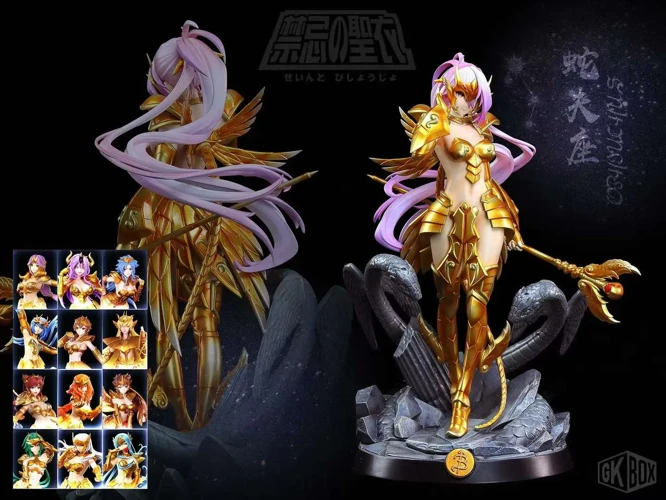
In conclusion, the study of asteroids is of paramount importance in understanding the formation and evolution of our solar system. These rocky objects hold invaluable information about the conditions that existed during the early stages of planet formation. From their origins in the primordial solar nebula to their role in clearing orbital paths and building planets, asteroids have played a significant role in shaping the cosmos as we know it today. Furthermore, their impact cratering activities have had profound effects on the geological and biological history of planets. The delivery of water and organic materials by volatile-rich asteroids has also contributed to the development of life on Earth. Moreover, asteroids act as time capsules, preserving the ancient compositions and characteristics of the early solar system. By studying asteroids and analyzing their composition, scientists can gain insights into the formation of planets and other celestial bodies. Overall, the study of asteroids continues to provide us with intriguing discoveries and contributes to our understanding of the origins and dynamics of the solar system and beyond.
Frequently Asked Questions

1. What is the difference between asteroids and comets?
Asteroids are primarily composed of rock and metal, while comets are made up of ice, dust, and organic compounds. Comets often have a distinct coma and tail when they approach the Sun, due to the sublimation of their icy components.
2. Are asteroids dangerous to Earth?
While the majority of asteroids pose no threat to Earth, there is a small possibility of a large asteroid colliding with our planet. Extensive efforts are focused on identifying and tracking near-Earth asteroids, ensuring early warning systems and potential deflection strategies are in place.
3. Can asteroids contain valuable resources?
Asteroids hold significant potential for resource extraction. Some asteroids have been found to contain valuable metals such as platinum, palladium, and gold. Additionally, their water content can serve as a vital resource for future space missions.
4. How do scientists study asteroids?
Scientists study asteroids through various methods, including spacecraft missions, remote sensing observations, and analyzing meteorite samples that have fallen to Earth. These approaches help us understand their composition, size, shape, and orbital characteristics.
5. Can asteroids be mined for minerals?
Yes, asteroid mining is a concept being explored by scientists and private companies. The idea is to extract valuable resources from asteroids for use both in space and on Earth, potentially opening up new avenues for resource sustainability.
6. Have any spacecraft visited asteroids?
Yes, several spacecraft missions have visited and even landed on asteroids. Examples include the Hayabusa mission to the asteroid Itokawa, the Rosetta mission to the comet 67P/Churyumov-Gerasimenko, and the ongoing OSIRIS-REx mission, which is currently studying the asteroid Bennu.
7. Can asteroids collide with each other?
Asteroids can collide with each other, resulting in changes to their shape, composition, and orbital characteristics. These collisions can also lead to the creation of asteroid families or groups with similar orbits and compositions.
8. Can we divert an asteroid on a collision course with Earth?
Potentially, yes. Scientists are studying various methods to deflect or disrupt the trajectory of an asteroid on a collision course with Earth. Approaches include gravitational tractor, kinetic impactors, and solar sails.
9. Are all asteroids in the asteroid belt?
No, asteroids can be found in various locations throughout the solar system. While the majority reside in the asteroid belt between Mars and Jupiter, some asteroids have orbits that bring them closer to the inner planets or even cross Earth’s orbit.
10. Can asteroids provide clues about the formation of other planetary systems?
Absolutely. By studying asteroids in our own solar system, scientists can gain insights into the processes and materials that contributed to the formation of not only our planets but also other planetary systems throughout the universe.
References
- asteroids | AMNH
- Other Objects in the Solar System | Earth Science
- Asteroids, Comets & Meteors: Facts
Frequently Asked Questions

1. What role do asteroids play in the formation of the solar system?
Asteroids play a crucial role in the formation of the solar system. They are remnants from the early stages of the solar system’s formation, providing valuable insights into its history and composition.
2. How are asteroids defined and what are their characteristics?
Asteroids are rocky objects that orbit the sun and are typically composed of various minerals and metals. They are smaller than planets but larger than meteoroids, ranging in size from a few meters to hundreds of kilometers in diameter.
3. What are the different types of asteroids?
There are several types of asteroids, including carbonaceous (C-type), silicate (S-type), metallic (M-type), and stony-iron (P-type) asteroids. Each type has distinct compositions and characteristics, providing valuable information about the materials present in the early solar system.
4. How did asteroids originate?
Asteroids are believed to have originated from the primordial solar nebula, a cloud of gas and dust that surrounded the early sun. Through the process of accretion, small particles gradually came together to form larger bodies, including asteroids.
5. What is the role of asteroids in planet formation?
Asteroids played a crucial role in the formation of planets. During the early stages of planet formation, asteroids “cleared the orbital path” for planets by colliding with other bodies, helping to shape the layout of the solar system.
6. How do asteroids contribute to impact cratering?
Asteroids have been responsible for creating impact craters on celestial bodies such as planets and moons. These impact events can cause significant changes to the surface and even lead to mass extinctions, as seen in the case of the dinosaurs.
7. Can asteroids deliver water and organic materials to planets?
Yes, asteroids can deliver water and organic materials to planets. Volatile-rich asteroids, such as carbonaceous chondrites, contain significant amounts of water and organic compounds, providing the building blocks for life as we know it.
8. How do asteroids serve as time capsules?
Asteroids serve as time capsules, preserving the materials and conditions of the early solar system. By studying their composition, scientists can gain insights into the processes that occurred billions of years ago, helping us understand the origins of the solar system.
9. How do asteroids contribute to our understanding of meteorite composition?
Asteroids are the source of most meteorites that fall to Earth. By studying meteorites, scientists can gain valuable information about the composition of asteroids and the early solar system. Meteorites provide a tangible link between space and Earth.
10. What can studying asteroids tell us about the early solar system?
Studying asteroids can tell us a great deal about the early solar system, including the abundance of different elements and compounds, the processes of planet formation, and the dynamics of the early planetary system. This knowledge helps us piece together the puzzle of our cosmic origins.

